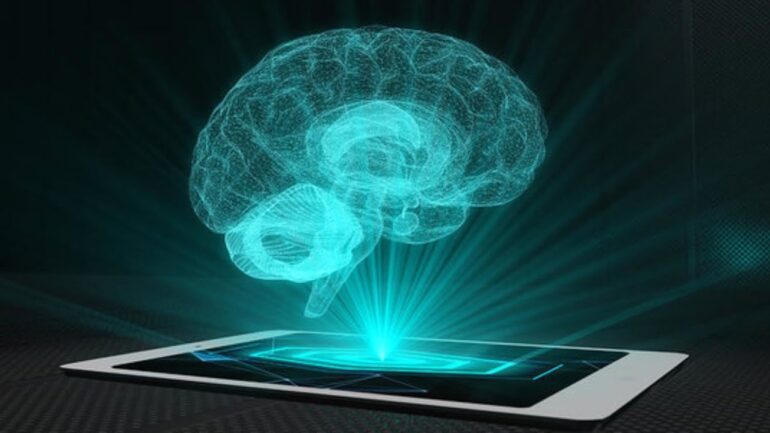TL;DR:
- Deep learning technology simplifies the creation of holograms from 2D photos.
- Three-stage deep neural networks speed up hologram generation without the need for expensive equipment.
- Potential applications in high-fidelity 3D displays and in-vehicle holographic systems.
- Deep learning resolves computational challenges associated with traditional holography.
- The process involves predicting depth maps, generating holograms, and refining for different display devices.
- The proposed approach outperforms state-of-the-art graphics processing units in terms of speed.
- Cost-effective, as it eliminates the need for specialized cameras like RGB-D cameras.
- Future prospects include heads-up displays, head-mounted displays, and augmented development of holographic technology.
Main AI News:
Holography, once reserved for the realm of science fiction, has taken a giant leap into reality with a groundbreaking technological advancement. Researchers have harnessed the power of deep learning to simplify the creation of holograms, allowing for the seamless transformation of ordinary 2D images into stunning 3D representations. This innovative approach, driven by a triad of deep neural networks, not only accelerates hologram generation but also outpaces top-tier graphics processing units in terms of speed. The best part? It eliminates the need for costly equipment like RGB-D cameras after the training phase, making it a cost-effective game-changer. With its potential applications in high-fidelity 3D displays and in-vehicle holographic systems, this breakthrough marks a pivotal moment in the evolution of holographic technology.
The Transformative Power of Deep Learning in Holography
Holograms, with their ability to provide a lifelike, three-dimensional view of objects, have found value across diverse sectors, including medical imaging, manufacturing, and virtual reality. Unlike conventional 2D images, holograms offer an unparalleled level of detail and immersion. However, their adoption has been hindered by the complexity of traditional holography, which involves recording an object’s 3D data and its interactions with light. This process demands substantial computational power and specialized cameras, creating a barrier to widespread usage.
Enter deep learning, the driving force behind a new era in holography. Recent times have seen the emergence of various deep-learning methods designed to generate holograms directly from 3D data obtained via RGB-D cameras. This approach sidesteps the computational challenges of traditional methods, offering a more accessible route to hologram creation.
A Paradigm Shift in Holographic Generation
Now, a pioneering team led by Professor Tomoyoshi Shimobaba of the Graduate School of Engineering at Chiba University presents an innovative approach. They utilize deep learning to streamline hologram generation further, enabling the creation of 3D images directly from standard 2D color images captured with regular cameras. This groundbreaking study, also involving Yoshiyuki Ishii and Tomoyoshi Ito of the Graduate School of Engineering, Chiba University, has recently been published in the prestigious journal “Optics and Lasers in Engineering.”
Professor Shimobaba elucidates the motivation behind this research, stating, “There are several challenges in realizing holographic displays, including acquiring 3D data, the computational costs of holograms, and adapting hologram images to match the characteristics of holographic display devices. We embarked on this journey because we believe that deep learning, which has made significant strides in recent years, holds the potential to address these issues.”
The Three-Stage Deep Learning Process
The proposed approach employs a three-step deep neural network (DNN) architecture to convert a regular 2D color image into data suitable for displaying a 3D scene or object as a hologram. The first DNN takes a standard color image captured by a regular camera as input and predicts the associated depth map, providing essential information about the image’s 3D structure.
Both the original RGB image and the depth map generated by the first DNN serve as inputs for the second DNN, which generates the hologram. Finally, the third DNN refines the hologram produced by the second DNN, tailoring it for display on various devices.
Unparalleled Speed and Affordability
One of the most remarkable findings of this research is the superior speed of the proposed approach in processing data and generating holograms compared to state-of-the-art graphics processing units. Professor Shimobaba also highlights another significant advantage, explaining, “Another noteworthy benefit of our approach is that the reproduced image of the final hologram can represent a natural 3D reproduced image. Moreover, since depth information is not used during hologram generation, this approach is inexpensive and does not require 3D imaging devices such as RGB-D cameras after training.”
Future Prospects and Closing Thoughts
In the near future, this innovative approach could find applications in heads-up displays and head-mounted displays, delivering high-fidelity 3D visuals. It also holds the potential to revolutionize in-vehicle holographic head-up displays, offering passengers a 3D perspective on essential information related to people, roads, and signs. This forward-looking approach is poised to usher in a new era of ubiquitous holographic technology, paving the way for transformative advancements in multiple industries.
Conclusion:
The application of deep learning in holography signifies a transformative shift in the market. It opens doors to cost-effective, high-speed hologram generation, making 3D displays more accessible across various industries. This advancement is poised to drive innovation in fields such as medical imaging, manufacturing, and virtual reality, ultimately expanding the holographic technology market.

